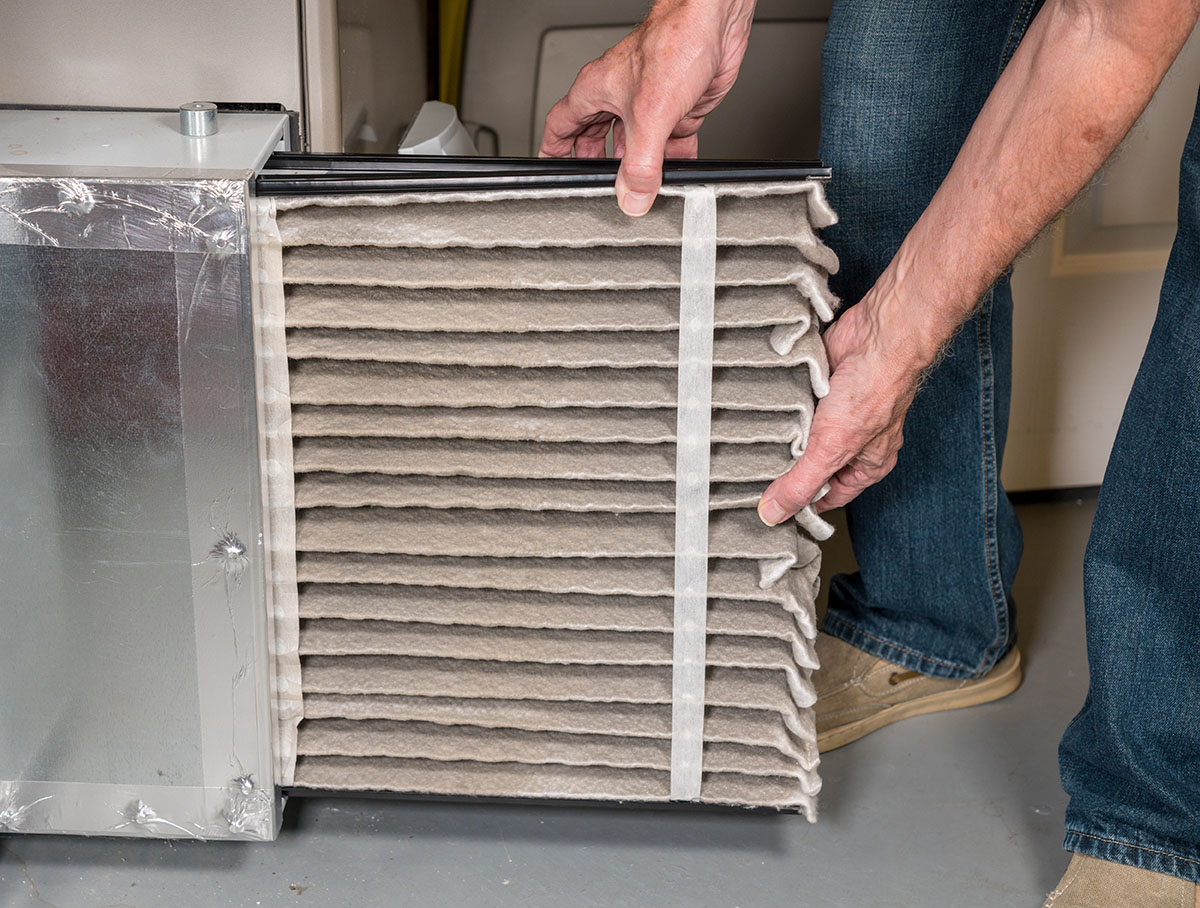Why and How to Change Your Air Filter

Your air filter is only one component of your HVAC system, but it performs the crucial role of keeping dust, pollen and allergens out of your equipment. Once this filter gets clogged, there is nothing preventing this debris from entering the unit and slowing down its inner workings.
A clogged air filter results in two specific problems that prevent it from working at its peak:
- Unnecessary wear and tear on the unit, leading to premature failure
- Reduced airflow through the system
When to Change Your Air Conditioner Filter
Energy Star guidelines recommend checking and changing your A/C filter monthly during the peak season. The good news is that it’s a job you can do yourself if you follow these easy steps.
Step 1: Locate the filter. There are several places it could be, depending on the make and model of your unit. In some systems, you’ll find the filter in the return air duct. If your heating and A/C systems use the same ducts, the shared air filter for both systems might be in or near the furnace’s blower system. Check your user’s manual for more information, or ask your HVAC service tech to show you where your filter is.
Step 2: Use the right replacement filter. Make sure to buy the right filters by checking the side of the filter to find the correct size. If you get tripped up on this part, again, it’s smart to ask your HVAC technician where to buy the filters you need.
If you have allergy sufferers in your home, you might want to invest in filters that do more than merely keeping dust out of your air conditioner. Look for HEPA filters if your goal is to improve your indoor air quality.
Steps to Change Your A/C Filter
Step 1: Shut off the power. There are two reasons to take this step. The first is your safety, and the second is the safety of your equipment. If the unit is still running while you’re working on swapping the filter, dust and debris can get sucked into the unit. Be sure to switch off power at the circuit breaker, as well as at the unit itself.
Step 2: Take out the old filter. Slide it out of the slot that holds it in place.
Step 3: Check its condition. Once you’ve taken out the AC filter, evaluate it. Hold it up to the light – can you see anything coming through? You need to replace or clean a clogged filter, even if you’ve been using it for less than the manufacturer’s recommended timeframe.
Step 4: Replace or clean the filter. Are your filters disposable, or reusable? A disposable filter generally has a cardboard frame and a paper or fiber mesh surface. A permanent, reusable filter consists of a sturdier material with a metal frame and a special coating to make it washable. If you’re cleaning a reusable one, check the manufacturer’s instructions for doing so.
Step 5: Insert the replacement or cleaned filter. Now, the only thing left to do is to install the filter correctly. Look for an arrow on the filter’s frame indicating the direction of the airflow, which is always away from the return air duct and toward the air handler. When you put the filter back, make sure the arrow is pointing the correct direction.
Step up Your HVAC Maintenance
Now that you know how to check and change an A/C filter, put an alert on your calendar to remind you to do it every month. Don’t neglect your furnace if its filters are separate from your air conditioner.
If you didn’t know how to change your filters, you’ve probably been overlooking other HVAC maintenance as well. Preventive maintenance saves you money and time by keeping your heating and cooling equipment in top working condition all year long. Contact your local HVAC experts at Nu-Temp Heating and Cooling for a thorough inspection and tune-up of your system so it won’t let you down during these “dog days” of summer.
